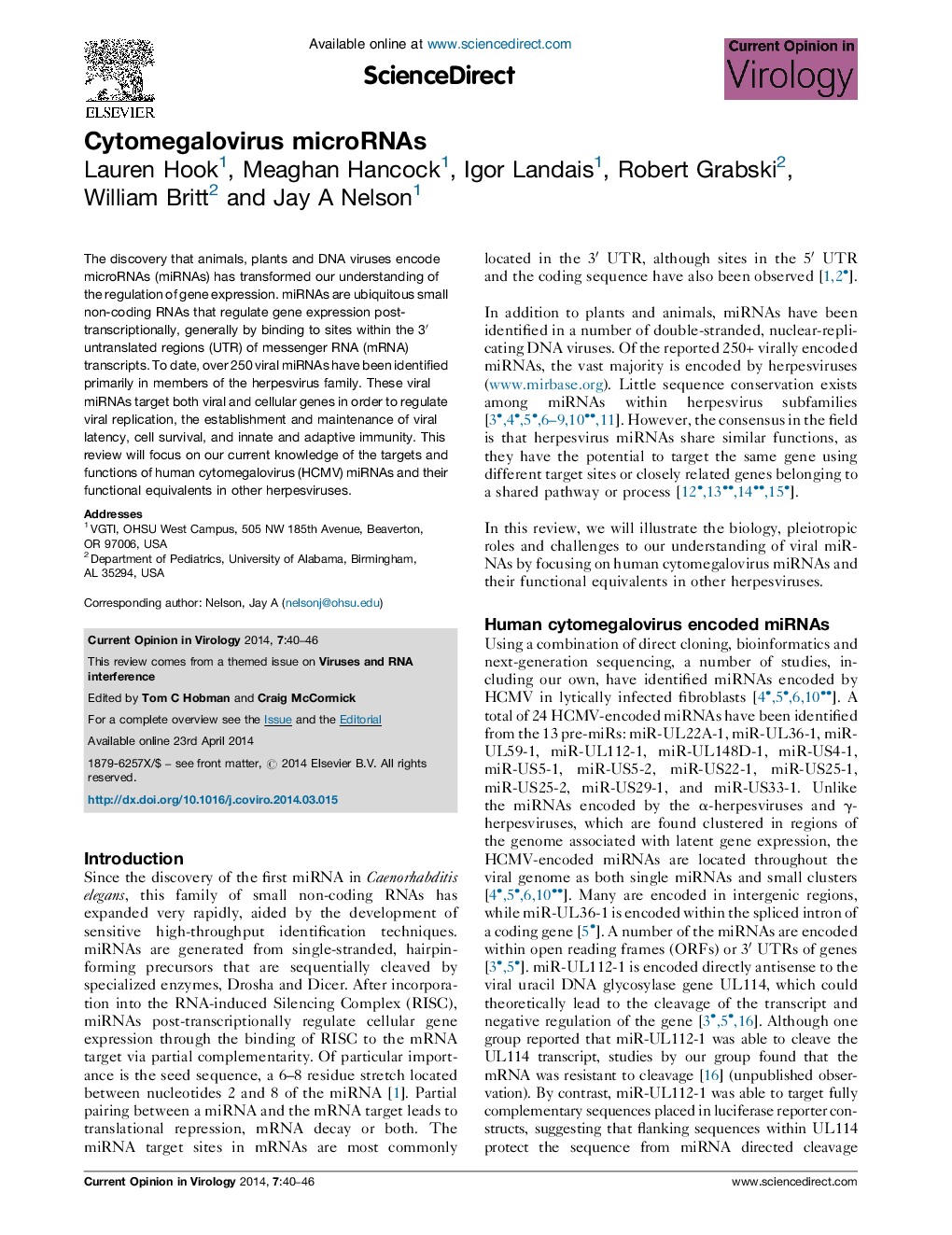| Article ID | Journal | Published Year | Pages | File Type |
|---|---|---|---|---|
| 2473307 | Current Opinion in Virology | 2014 | 7 Pages |
•More than 250 viral miRNAs have been identified, mostly in the herpesvirus family.•RIP-Chip, PAR-CLIP and HITS-CLIP approaches have been instrumental in identifying potential miRNA target genes.•Our understanding of the functions of herpesvirus miRNAs is just beginning to emerge.•Despite absence of conservation, miRNAs from different herpesviruses may target the same genes and pathways.
The discovery that animals, plants and DNA viruses encode microRNAs (miRNAs) has transformed our understanding of the regulation of gene expression. miRNAs are ubiquitous small non-coding RNAs that regulate gene expression post-transcriptionally, generally by binding to sites within the 3′ untranslated regions (UTR) of messenger RNA (mRNA) transcripts. To date, over 250 viral miRNAs have been identified primarily in members of the herpesvirus family. These viral miRNAs target both viral and cellular genes in order to regulate viral replication, the establishment and maintenance of viral latency, cell survival, and innate and adaptive immunity. This review will focus on our current knowledge of the targets and functions of human cytomegalovirus (HCMV) miRNAs and their functional equivalents in other herpesviruses.
